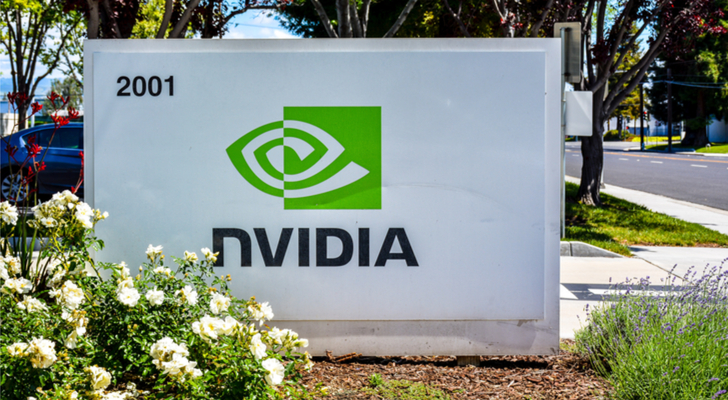It’s important not to overreact to the recent declines in Nvidia (NASDAQ:NVDA) stock. Long-term, I still believe Nvidia stock is a buy. Short-term, it has been a different story. Nvidia stock has fallen 18% in just the last eight trading sessions before today.
There are some external factors behind the weakness of Nvidia stock. Most notably, it has been a risk-off market of late, with tech high-flyers like Square (NYSE:SQ) and Shopify (NYSE:SHOP) slumping. And the semiconductor space in particular has taken a pounding. Advanced Micro Devices (NASDAQ:AMD) has pulled back about 20% from its late September levels. Micron Technology (NASDAQ:MU) had already sold off before the market’s slump and is nearing an eight-month low. Qualcomm (NASDAQ:QCOM) has fallen more than 10% in less than two weeks.
The selloff in chip names seems centered around one key question: is this time different? The good news for NVDA stock is that it still looks as if it is.
Chip Stocks Haven’t Always Been High-Flyers
It’s perhaps easy to forget amid the huge, recent gains in stocks like NVDA and AMD, but historically the semiconductor sector has been a lousy place in which to put capital. The Philadelphia Semiconductor Index, available in ETF form as the iShares PHLX Semiconductor ETF (NASDAQ:SOXX), traded near $70 in 2002. It wouldn’t reach those levels again for over eleven years. Nvidia stock itself went from a $16 peak in 2002 to $20 at the beginning of 2015; that’s an average annual gain of less than 2%.
The problem is – or perhaps was – that the semiconductor business is not a particularly attractive one. In the sector, products have to improve continually to keep with the pace of innovation (this concept is often explained as Moore’s Law
). At the same time, chip prices generally come down over time. And traditionally, the industry has been cyclical (Micron still is cyclical). Chip makers’ margins have been low, and their capital spending levels have traditionally been high. Finally, their earnings usually don’t grow in a straight line -and can plunge seemingly at a moment’s notice.
For all those reasons, semiconductor stocks – with rare exceptions – historically have received below-market multiples. Even Intel (NASDAQ:INTC), until recently the world’s largest chip maker (it’s now second behind Samsung), was pretty much dead money for a decade after the dot-com bust. (It still hasn’t returned to its 2000 peaks or really come close to them.) The chip sector was not an attractive place to be, particularly for growth investors.
NVDA Stock Takes Off And So Does the Sector
That has obviously changed in the last few years. Starting in late 2012, the SOX index doubled in less than three years. After selling off a bit, it doubled from its February 2016 lows in less than two years. Nvidia stock has been a key contributor to the sector’s rebound. Somewhat incredibly, even after the recent selloff, NVDA stock has risen 1,420% in the last five years.
But NVDA wasn’t the only driver. A key reason for the gains in semiconductor stocks has been that investors increasingly believe that secular growth drivers – autonomous driving, cloud computing, Internet of Things – can offset, at least to some extent, the industry’s cyclical nature. (Stifel analyst Patrick Ho detailed that argument back in late 2016.) And so the growth of Nvidia and AMD isn’t destined to come crashing to a halt at some indeterminate point in the future. Intel and Texas Instruments (NASDAQ:TXN) may be in the same boat.
That argument rests on what often is one of the most dangerous premises in investing: that “this time is different.” And what has happened of late is that investors aren’t buying that argument anymore. Equipment makers Applied Materials (NASDAQ:AMAT) and Lam Research (NASDAQ:LRCX) – which Stifel’s Ho said weren’t cyclical anymore – are plunging, amid fears of weaker and/or delayed orders. Micron is back near its recent lows. And the weakness is bleeding over to Nvidia stock.
This Time Might Not Be Different, But Nvidia Stock Is Different
To be honest, I do think the bear thesis on chip companies has some merit. But when it comes to NVDA, there’s an important distinction to make. Nvidia isn’t just any semiconductor company. It’s absolutely dominant in gaming, in which demand is largely consumer-driven. Secular trends there look intact. Macro weakness could cause demand to decline at some point, since Nvidia-based systems aren’t cheap. Traditional semiconductor cycles, however, aren’t really in play.
Data center growth probably won’t slow down, and there, too, cyclical concerns don’t apply. The same is true of the professional visualization business. Nvidia’s automotive opportunity remains a few years off, but that category accounted for just 5% of the company’s first-half revenue.
The market is acting as if historical semiconductor cyclicality is returning and will take Nvidia down with it. The former scenario is possible, but the latter scenario seems unlikely. NVDA can maintain its growth even without cyclical help. And if it does maintain its growth, Nvidia stock can easily recapture its recent losses, and could even rise beyond that level.
As of this writing, Vince Martin has no positions in any securities mentioned.

